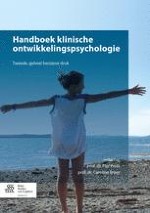Van beginnen met gebruik tot verslaving
Gebruik van psychoactieve middelen die tot verslaving kunnen leiden begint veelal in de adolescentie en hetzelfde kan gezegd worden van problematisch gebruik dat later uitmondt in verslaving. Bij beginnen van gebruik en bij escalatie van gebruik zijn diverse factoren van invloed. Bij beginnen van gebruik zijn omgevingsfactoren heel belangrijk. Zo beginnen kinderen van ouders die duidelijke regels stellen (niet drinken onder de 18 jaar) later met drinken en ontwikkelen ze minder problemen. Dit kan ouders aangeleerd worden in combinatie met voorlichting voor de jongere. Als jongeren eenmaal een middel gebruiken worden genetische factoren belangrijker die zich onder meer uiten in relatief positieve effecten van het middel, en indirect in cognitieve processen, zowel in bewuste overtuigingen over het effect van het middel als in automatisch geactiveerde of impliciete cognitieve reacties. Daarnaast is impulsregulatie een belangrijke factor, waarbij zowel vermogen om impulsen te reguleren belangrijk is als motivatie om dat te doen. Suboptimale zelfregulatie in de kindertijd is een risicofactor voor zowel vroeg beginnen met middelengebruik als voor een relatief snelle escalatie. We bespreken implicaties voor preventie en behandeling.
